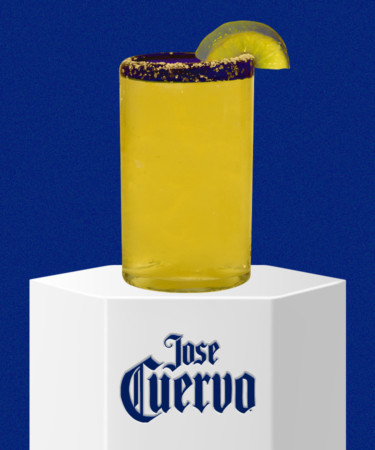Like most classic drinks, there’s not one clear origin story for the Margarita — but that hasn’t stopped bartenders and imbibers from making their best guesses.
Tequila brand Jose Cuervo weaves a mythology that claims the brand had a heavy hand in establishing the refreshing drink. It’s a compelling story, for sure — but how big of a part did the brand actually play in the Marg’s invention?
Wherever the iconic drink started, one thing is clear: the translation. “Margarita” is the Spanish word for “daisy.” It’s a name that’s also shared with a drink that originated during the 1800s and that was often ordered through the mid-20th century. Margarita’s older, no-nonsense sister Daisy is a gin-based cocktail that shares the sour citrus base of the cocktail we know today.
The antiquated — and now widely unknown — Daisy blends 1 and a half ounces of gin, 1 ounce of lemon juice, three-quarter teaspoon of simple syrup, and half a teaspoon grenadine with ice in a shaker. Swap out the gin for tequila, and the cocktail resembles the sour and sweet magic of the Margarita.
There are various tales that attempt to explain how the Margarita actually originated. Some say it was an overwhelmed bartender who mistook tequila for gin while creating a Daisy. Others share a tale of a picky customer demanding a custom creation, while others, still, say the drink was labor of love crafted especially for a beloved socialite.
The first written recipe for a Margarita-like cocktail was published under the name Picador in 1937, appearing in William Tarling’s “Café Royal Cocktail Book” using the same ingredients and proportions of modern Margs. It was followed by the Tequila Sour, as archived by bartender Charlie Connolly in “The World Famous Cotton Club: 1939 Book of Mixed Drinks.”
Erick Castro, bartender at San Diego’s Polite Provisions and Raised by Wolves, says he looks to the salt rim of the Margarita when it comes to sorting out the famed cocktail’s origins. With that in mind, Castro says he considers the Tequila Sour to be the earliest documented drink that fully captures the spirit of the Margarita.
While it can’t be credited with creating the cocktail, Jose Cuervo helped to bring tequila to the United States long before the Margarita was widely known. In 1880, the family business became the first tequila brand to bottle its spirit instead of shipping in barrels only — a move that helped the brand transport tequila more easily and earlier than its competitors.
The family behind the popular tequila brand was the first to import it to the United States, making it the first tequila brand American bartenders were likely to use in Margs. For this reason, it’s easy to see why Cuervo would say its claim to fame is establishing the Margarita stateside.
By 1945, Jose Cuervo was using the Margarita in marketing campaigns, leading with the slogan, “It’s more than just a girl’s name” in reference to the emerging cocktail. The brand’s original Marg recipe included 1 and a half ounces of White Cuervo Tequila, half an ounce of triple sec, and an ounce of fresh lime juice.
Castro says that as Mexican cuisine spread in popularity throughout the United States in the mid-20th century, the Margarita followed. The unique makeup of the drink — including the salt rim, which helps to replenish electrolytes to dehydrated drinkers in hot regions — lends itself well to pairing with food.
The Margarita picked up in popularity through the mid-20th century, and, well, the rest is history.
Jose Cuervo remained a household name in the spirit world. While bartending in college during the early aughts, Castro says, he observed customers often calling for Cuervo’s premium 1800 tequila in their Margaritas. The well-known brand was morphing to offer top-shelf liquors to cocktail consumers for a bit more cash, Castro says.
Of course, we can’t forget the cultural impact of Tracy Byrd’s “Ten Rounds of Jose Cuervo,” or the endless memes about Americans’ love-hate relationship with the spirit. While it’s debatable whether Jose Cuervo single-handedly introduced the U.S. to the Marg, it’s clear the brand holds a unique place in most Margarita drinkers’ memories.
